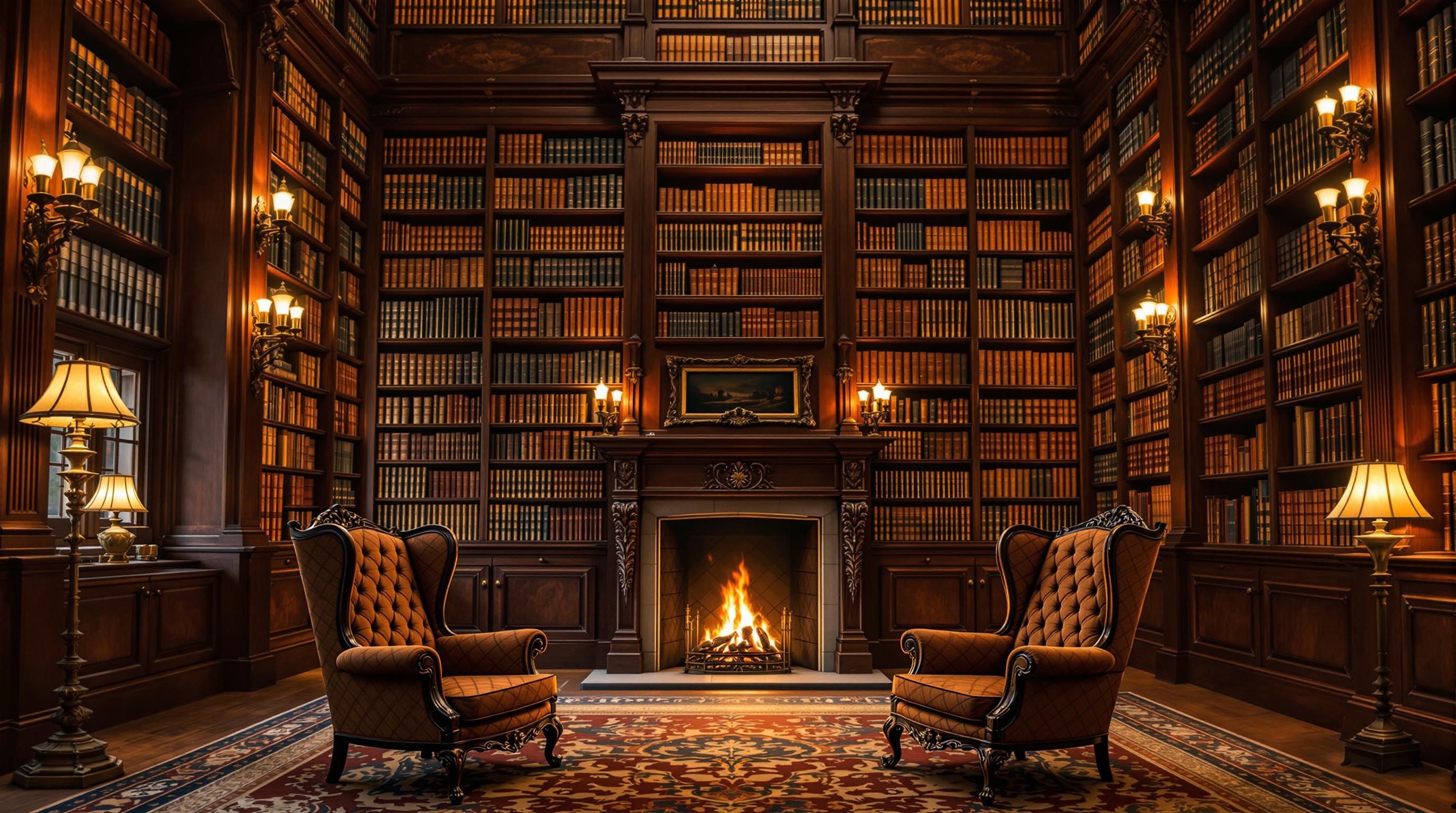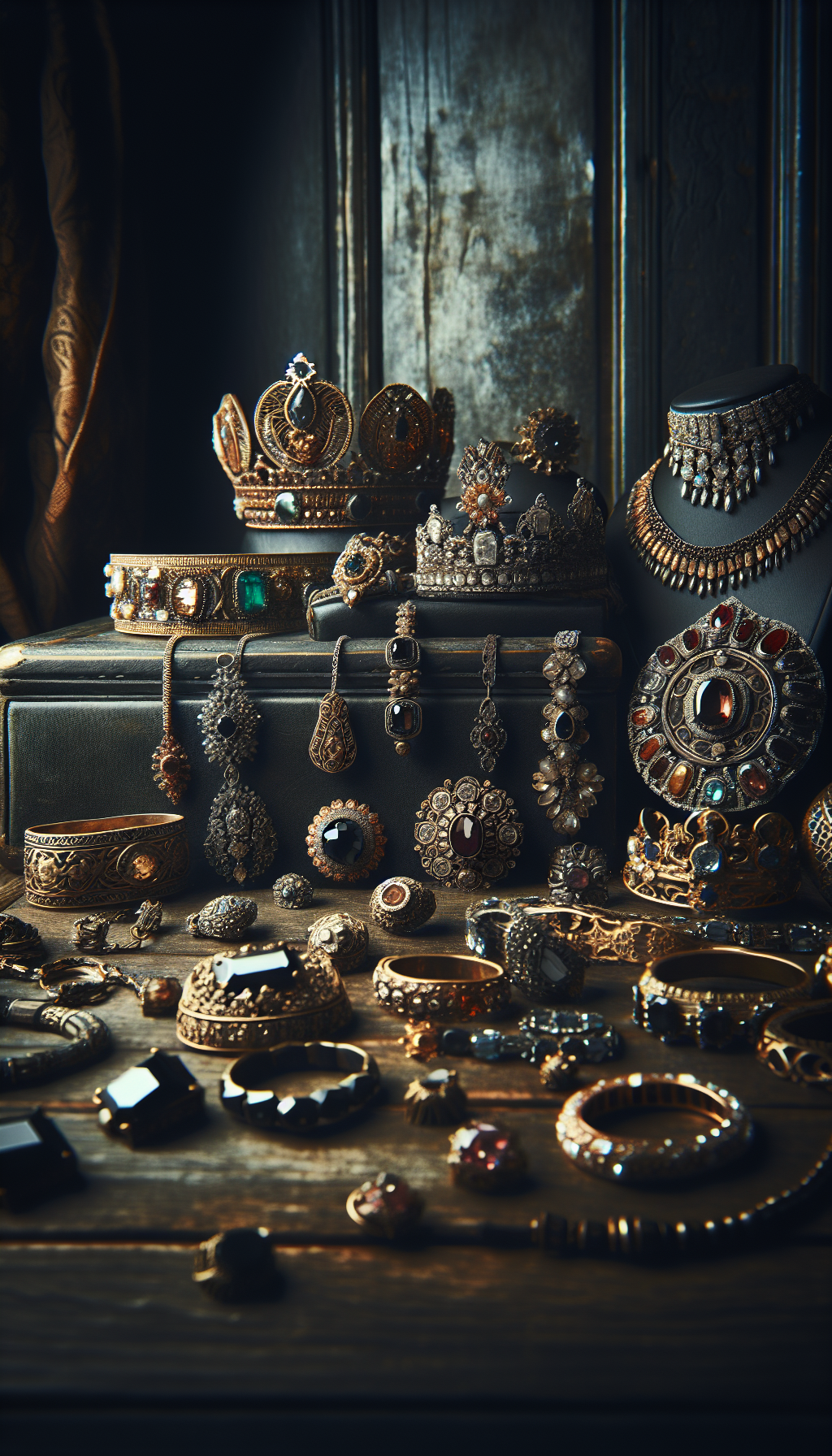Antique chairs are among the most versatile and sought-after pieces of vintage furniture. From ornate Victorian thrones to minimalist mid-century designs, these functional art pieces can transform a space while potentially holding significant value. But how do you know if that chair in your grandmother’s attic is worth $50 or $5,000?

Whether you’re a collector, dealer, inheritor of family heirlooms, or simply curious about that unique chair you found at an estate sale, understanding how to properly identify and value antique chairs is essential. In this comprehensive guide, we’ll explore everything you need to know about determining antique chair values, from identifying authentic pieces to understanding the factors that influence their worth in today’s market.
What Makes a Chair “Antique”?
Defining Antique vs. Vintage
In the furniture world, the term “antique” traditionally applies to items at least 100 years old. Pieces that are younger but still collectible (typically 50-99 years old) are classified as “vintage.” This distinction isn’t merely semantic—it often has significant implications for a chair’s market value and collectibility.
A true antique chair typically shows evidence of hand craftsmanship and construction techniques that differ from modern manufacturing methods. Look for:
Key Identifiers of Authentic Antique Chairs
- Hand-cut dovetail joints rather than machine-perfect cuts
- Irregularities in symmetry suggesting handcrafted construction
- Old wood patina that can’t be convincingly replicated
- Traditional joinery methods specific to historical periods
- Signs of appropriate aging consistent with the chair’s purported age
Understanding these distinctions helps prevent the common and costly mistake of overpaying for reproduction pieces that merely imitate antique styles.
How to Identify Antique Chair Styles
Major Antique Chair Styles & Periods
Evolution of Antique Chair Styles
- 1700-1750
Queen Anne
Characterized by cabriole legs, pad feet, and fiddle-shaped backrests. Typically made from walnut or maple with minimal ornamentation. - 1750-1790
Chippendale
Featuring elaborate carvings, ball-and-claw feet, and ribbon-back designs. Usually crafted from mahogany with Gothic, Rococo, or Chinese influences. - 1790-1815
Federal/Sheraton
Distinguished by straight lines, tapered legs, and restrained neoclassical decoration. Often features inlay work and shield-back designs. - 1840-1900
Victorian
Elaborate, heavily carved designs with curved lines and plush upholstery. Subtypes include Gothic Revival, Renaissance Revival, and Eastlake. - 1890-1915
Art Nouveau
Flowing, organic lines inspired by natural forms. Often features whiplash curves and stylized floral motifs. - 1920-1940
Art Deco
Bold geometric patterns, exotic materials, and streamlined forms reflecting the machine age and international influences.
Being able to accurately identify these styles not only helps with valuation but also provides insights into construction methods, materials, and historical context that can significantly impact a chair’s worth.
Factors That Determine Antique Chair Value
Value Determinants
1. Age and Rarity
Generally, older chairs command higher prices, especially those from periods where few examples have survived. However, age alone doesn’t guarantee value—a common Victorian side chair might be worth less than a rare mid-century modern piece by a renowned designer.
2. Provenance and Attribution
Chairs with documented history—particularly those owned by historical figures or made by well-known craftsmen—can sell for premium prices. Attribution to a specific maker like Thomas Chippendale, Gustav Stickley, or Charles and Ray Eames can significantly increase value.
3. Condition
Condition Assessment Checklist
Evaluate these aspects when assessing an antique chair's condition:
- Original finish intact and unrestored
- All structural elements secure with no wobbling
- Original upholstery or period-appropriate replacement
- Minimal wear consistent with age
- No significant damage or missing elements
- Original hardware and joinery intact
- No inappropriate repairs or alterations
4. Materials and Craftsmanship
Chairs made from high-quality woods like mahogany, walnut, or rosewood typically command higher prices than those made from oak or pine. Exceptional craftsmanship, including hand carving, inlay work, or marquetry, also increases value.
5. Market Demand and Design Trends
Value fluctuates with collector interest and interior design trends. For instance, mid-century modern chairs have seen tremendous appreciation in recent years as contemporary interiors embrace their clean aesthetic.

Current Market Values for Antique Chairs
Price Ranges by Style and Period
Antique Chair Price Ranges
Current market values as of 2023
</tbody>
</table>
It’s important to note that these ranges represent typical retail values. Auction prices can vary significantly, sometimes exceeding these ranges for exceptional pieces or falling below them for items in poor condition or during market downturns.
Recent Notable Auction Results
Notable Antique Chair Auction Sales
Recent high-profile auction results
| Category | Price | Notes |
|---|---|---|
| Queen Anne (1700-1750) | $800-$5,000 | Higher for original condition and rare examples |
| Chippendale (1750-1790) | $1,000-$10,000+ | Exceptional examples can exceed $50,000 |
| Federal/Sheraton (1790-1815) | $800-$4,000 | Inlaid examples command premium prices |
| Victorian (1840-1900) | $200-$2,000 | Wide range depending on quality and design |
| Arts & Crafts/Mission (1880-1920) | $500-$5,000 | Stickley pieces can reach $10,000+ |
| Art Deco (1920-1940) | $400-$3,000 | Designer pieces significantly higher |
| Mid-Century Modern (1945-1970) | $300-$15,000 | Designer pieces by Eames, Wegner, etc. command highest prices |
</tbody>
</table>
How to Authenticate and Date Antique Chairs
Authentication Techniques
Construction Methods
Examine how the chair is put together. Antique chairs typically feature:
- Hand-cut dovetail or mortise-and-tenon joints
- Irregularities in symmetry and joinery
- Signs of hand tools rather than machine cutting
- Wooden pegs or old screws rather than modern fasteners
Wood and Materials
The type of wood can help date a chair:
- Oak dominated until about 1700
- Walnut was popular from 1700-1750
- Mahogany became prevalent from 1750-1830
- Rosewood and exotic woods appeared in high-end Victorian pieces
- Oak returned to popularity during the Arts & Crafts movement
Patina and Wear Patterns
Genuine antiques develop distinctive patina and wear patterns:
- Smooth, mellow color on exposed surfaces
- Darker finish in recessed areas where dust collects
- Wear consistent with use (seat edges, arm rests)
- Even oxidation across surfaces

Hardware and Upholstery
Original hardware and upholstery materials can also provide dating clues:
- Hand-forged nails and screws suggest pre-1830 construction
- Machine-cut square nails indicate 1830-1890
- Round wire nails suggest post-1890
- Original upholstery techniques like hand-stitching and horsehair stuffing
Getting Your Antique Chair Professionally Appraised
Professional Appraisal Options
Types of Appraisals
- Verbal Consultation: Quick, informal estimate, often free or low-cost
- Written Appraisal: Formal document with detailed description and valuation
- Insurance Appraisal: Specifically for insurance coverage purposes
- Estate Appraisal: For estate planning or settlement purposes
Finding a Qualified Appraiser
Look for appraisers with:
- Membership in professional organizations like the International Society of Appraisers (ISA) or American Society of Appraisers (ASA)
- Specialization in antique furniture or the specific period of your chair
- No conflict of interest (avoid appraisers who also want to buy your piece)
- Clear fee structure based on time rather than a percentage of value
Appraisal Costs
Professional written appraisals typically cost $100-$400 per hour, with most furniture pieces requiring 1-2 hours for thorough evaluation. While this may seem expensive, an accurate appraisal can prevent costly mistakes when insuring, selling, or purchasing valuable antique chairs.
DIY Valuation Tips and Resources
Research Resources for Collectors
Online Price Guides and Databases
Several online resources can help you research comparable sales:
- 1stDibs - High-end dealer listings
- Live Auctioneers - Auction results database
- Worthpoint - Subscription-based price guide
- eBay Sold Listings - Filter search results by “Sold Items”
Reference Books
Essential books for antique chair identification and valuation:
- “Field Guide to American Antique Furniture” by Joseph Butler
- “American Furniture: The Federal Period” by Charles Montgomery
- “Illustrated Dictionary of Antique Furniture” by Martin Miller
- “Antique Chairs” by James Mortimer
Local Resources
Don’t overlook local expertise:
- Antique shops and dealers
- Estate sale appraisers
- Local historical societies
- University art history departments
External Resources for Antique Chair Research
Antique Chairs Value Guide - LoveToKnow
Guide to understanding antique chair values with specific information on popular styles and price ranges.
How to Identify, Date & Value Antique Chairs
Comprehensive guide for identifying and dating antique chairs, with detailed style explanations.
Mearto Chair Appraisal Service
Online appraisal service specializing in antique chair authentication and valuation.
1stDibs Rare Antique Chair Marketplace
Curated marketplace featuring high-end antique chairs with verified authentication.
Fireside Antiques Chair Collection
Gallery of authenticated antique and vintage seating with detailed descriptions and pricing.
r/Antiques Reddit Community
Active community where experts and collectors discuss antique identification and valuation.
Restoration vs. Preservation: Impact on Value
Restoration Considerations
When Restoration Decreases Value
For high-value, museum-quality pieces, any alteration from original condition typically reduces value. Collectors of fine antiques generally prefer:
- Original finish, even if worn
- Period-appropriate repairs
- Visible evidence of age and use
- Minimal intervention approach
When Restoration Increases Value
For more common or functional antiques, sympathetic restoration may enhance value:
- Structural repairs that ensure usability
- Professional refinishing when the original finish is beyond salvage
- Appropriate upholstery replacement using period-correct methods
- Restoration by recognized experts
Best Practices for Preservation
To maintain value while ensuring longevity:
- Consult with a specialist before attempting any restoration
- Document the chair’s condition before any work begins
- Use reversible methods whenever possible
- Retain original materials wherever practical
- Keep records of all restoration work performed
Selling Antique Chairs: Options and Expectations
Selling Strategies
Dealer Consignment
Pros:
- Professional handling and marketing
- Access to established customer base
- No need to manage viewings or inquiries
Cons:
- Commission typically 30-50% of sale price
- Potentially slower turnaround
- Less control over pricing
Auction Houses
Pros:
- Competitive bidding can drive up prices
- Access to knowledgeable collectors
- Professional catalog descriptions
Cons:
- Seller’s premium typically 10-25%
- No guarantee of minimum price unless reserve is set
- Results can vary based on auction timing and attendance
Online Marketplaces
Pros:
- Lower fees than traditional venues
- Broader potential audience
- Control over listing and pricing
Cons:
- More work handling inquiries and shipping
- Greater risk of payment issues
- May attract lower offers than specialized venues
Selling Venue Comparison
Common Pitfalls in Antique Chair Valuation
Valuation Mistakes to Avoid
Misidentifying Reproductions
Many “antique” chairs are actually high-quality reproductions from the early to mid-20th century. Red flags include:
- Perfect machine-cut dovetails
- Uniform coloration without natural patina
- Modern screws or nails hidden under an aged finish
- Artificially distressed surfaces
Overlooking Significant Damage
Some damage is easily missed in initial inspections:
- Hairline cracks in joiners
- Previous insect damage (look for tiny holes)
- Hidden repairs under upholstery
- Frame alterations or “marriages” of parts from different chairs
Misattribution of Style or Maker
Attributing a chair to a famous maker without documentation can lead to valuation errors:
- Many “Chippendale” chairs are simply made in the Chippendale style
- Not all Mission-style furniture is made by Gustav Stickley
- Regional variations can be mistaken for major style categories
Ignoring Market Trends
Values fluctuate with collecting trends and interior design fashions:
- Victorian furniture that sold for thousands in the 1980s may fetch hundreds today
- Mid-century pieces have seen dramatic price increases in recent years
- Chinese-market antiques have appreciated significantly due to international demand
FAQ: Common Questions About Antique Chair Values
Common Questions About Antique Chair Values
How do I determine the value of an antique chair?
The most reliable way to determine an antique chair's value is to consult with a professional antique dealer or appraiser. They have the expertise and access to resources needed to provide a fair evaluation.
For a preliminary assessment, examine the chair’s style, construction, materials, condition, and any maker’s marks. Research comparable items that have recently sold through auction records, price guides, and online marketplaces. Remember that factors like provenance, rarity, and current market demand significantly influence value.
How can I tell if a chair is truly antique?
A genuine antique chair (generally 100+ years old) will show evidence of period-appropriate construction methods:
- Hand-cut joinery with slight irregularities
- Appropriate patina that develops naturally over time
- Construction materials consistent with the purported period
- Wear patterns that match the chair’s age and use
- Appropriate hardware (hand-forged or early machine-cut nails/screws)
Woods typically darken with age, joints may show slight separation, and seat bottoms often show evidence of original weaving, springs, or upholstery techniques. When in doubt, consult an expert who can examine the piece in person.
How much does it cost to get an antique chair appraised?
Professional written appraisals typically cost between $100-$400 per hour, with most chairs requiring 1-2 hours for thorough evaluation. The final cost depends on:
- The appraiser’s credentials and expertise
- The complexity of the item
- The purpose of the appraisal (insurance, estate, auction)
- Whether research is needed to authenticate the piece
Many antique dealers offer free verbal estimates, which can provide a general value range, though these are less detailed than formal written appraisals and may not be accepted for insurance or estate purposes.
Does reupholstering an antique chair decrease its value?
In most cases, yes—especially for high-value or museum-quality pieces. Collectors and museums generally prefer original upholstery, even if worn, as it provides historical information about materials and techniques.However, for more common antique chairs intended for regular use, sympathetic reupholstering using period-appropriate materials and techniques may maintain or even enhance value by making the piece more functional without compromising its character.
Before reupholstering any antique chair, consult with an expert to determine if the original materials have historical significance that would be lost through replacement.
What antique chair styles are most valuable?
Value depends more on quality, condition, and rarity than on style alone, but some consistently desirable styles include:
- Fine Chippendale chairs, especially ball-and-claw examples
- Queen Anne walnut or maple chairs with original finish
- Federal inlaid chairs by documented makers
- Gustav Stickley signed Arts & Crafts pieces
- Original Charles and Ray Eames designs
- Rare Chinese Huanghuali chairs from the Ming and Qing dynasties
Market preferences evolve over time, so styles that were highly valued decades ago may be less desirable today. Currently, mid-century modern chairs tend to command premium prices relative to Victorian styles.
Where is the best place to sell an antique chair?
The optimal selling venue depends on the chair's value, rarity, and your timeframe:
- High-value, rare chairs ($1,000+): Specialized auction houses like Christie’s, Sotheby’s, or Bonhams
- Mid-range chairs ($200-1,000): Regional auction houses, quality antique dealers on consignment, or specialized online platforms like 1stDibs
- Lower-value chairs (under $200): Local antique shops, general online marketplaces like eBay or Facebook Marketplace
For the best results, obtain an appraisal first so you have realistic price expectations and can choose the appropriate selling venue.
Conclusion: Making Informed Decisions
Understanding antique chair values requires a blend of historical knowledge, market awareness, and careful examination. Whether you’re buying, selling, or simply curious about a family heirloom, taking the time to research and potentially consult with experts can make the difference between a costly mistake and a savvy decision.
Remember that value goes beyond monetary worth—many antique chairs hold historical and cultural significance that transcends their market price. By learning to properly identify and evaluate these pieces, you not only make better financial decisions but also contribute to the preservation of craftsmanship and design heritage for future generations.
For particularly valuable or rare chairs, professional appraisal is always recommended. The investment in expert opinion typically pays for itself by preventing undervaluation when selling or overpayment when buying. With the knowledge from this guide and the right professional resources, you’re well-equipped to navigate the fascinating world of antique chair valuation.
Get a Professional Appraisal
Unsure about your item’s value? Our certified experts provide fast, written appraisals you can trust.
- Expert report with photos and comps
- Fast turnaround
- Fixed, upfront pricing
No obligation. Secure upload.
| Item | Price | Date | Auction House |
|---|---|---|---|
| Pair of Chippendale Mahogany Side Chairs | $32,500 | December 2022 | Christie's |
| Queen Anne Walnut Armchair, circa 1740 | $18,750 | January 2023 | Sotheby's |
| Gustav Stickley Morris Chair, circa 1905 | $9,200 | March 2023 | Skinner |
| Eames Lounge Chair and Ottoman, 1956 | $7,500 | April 2023 | Wright |
| Victorian Renaissance Revival Armchair | $1,200 | June 2023 | Bonhams |



